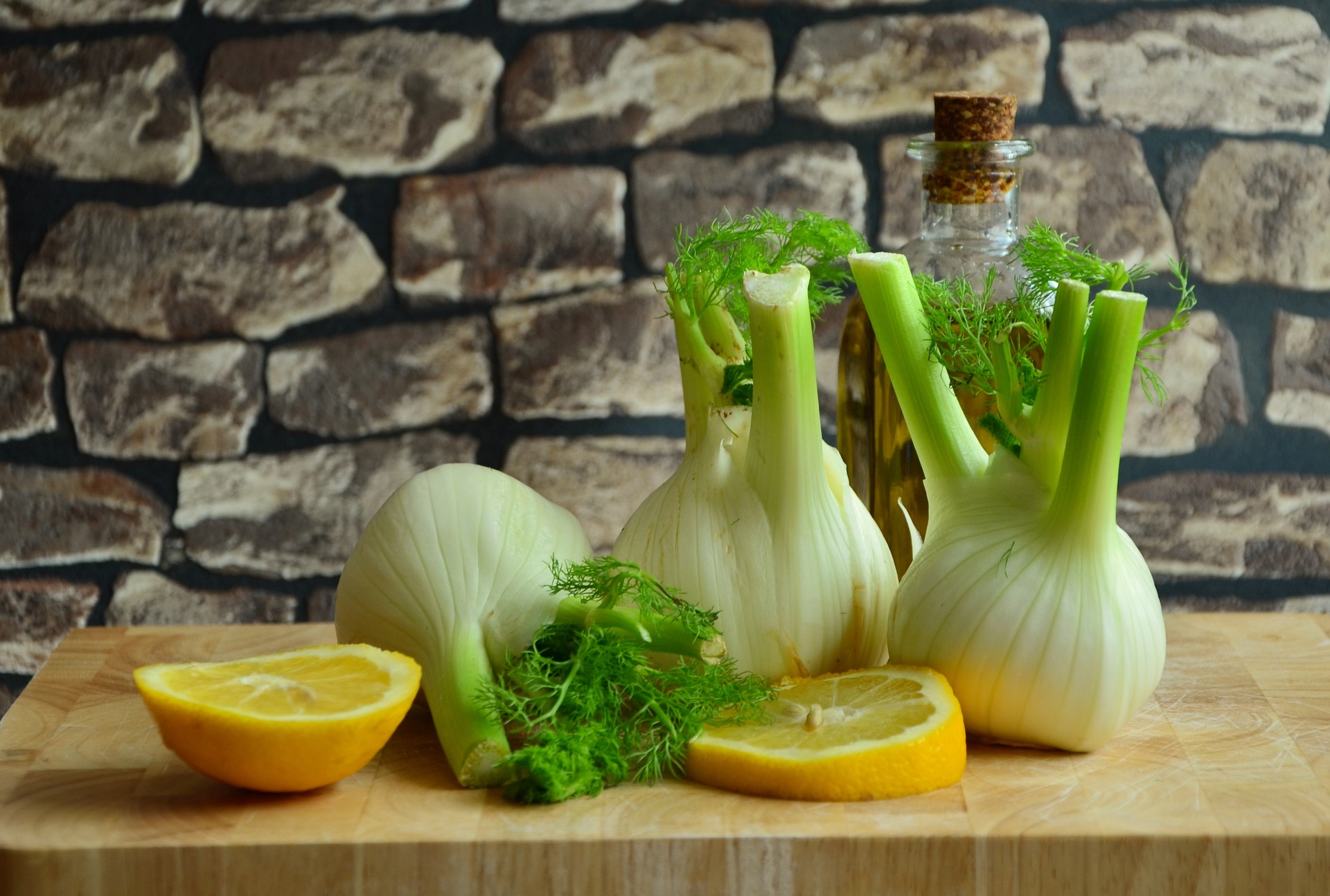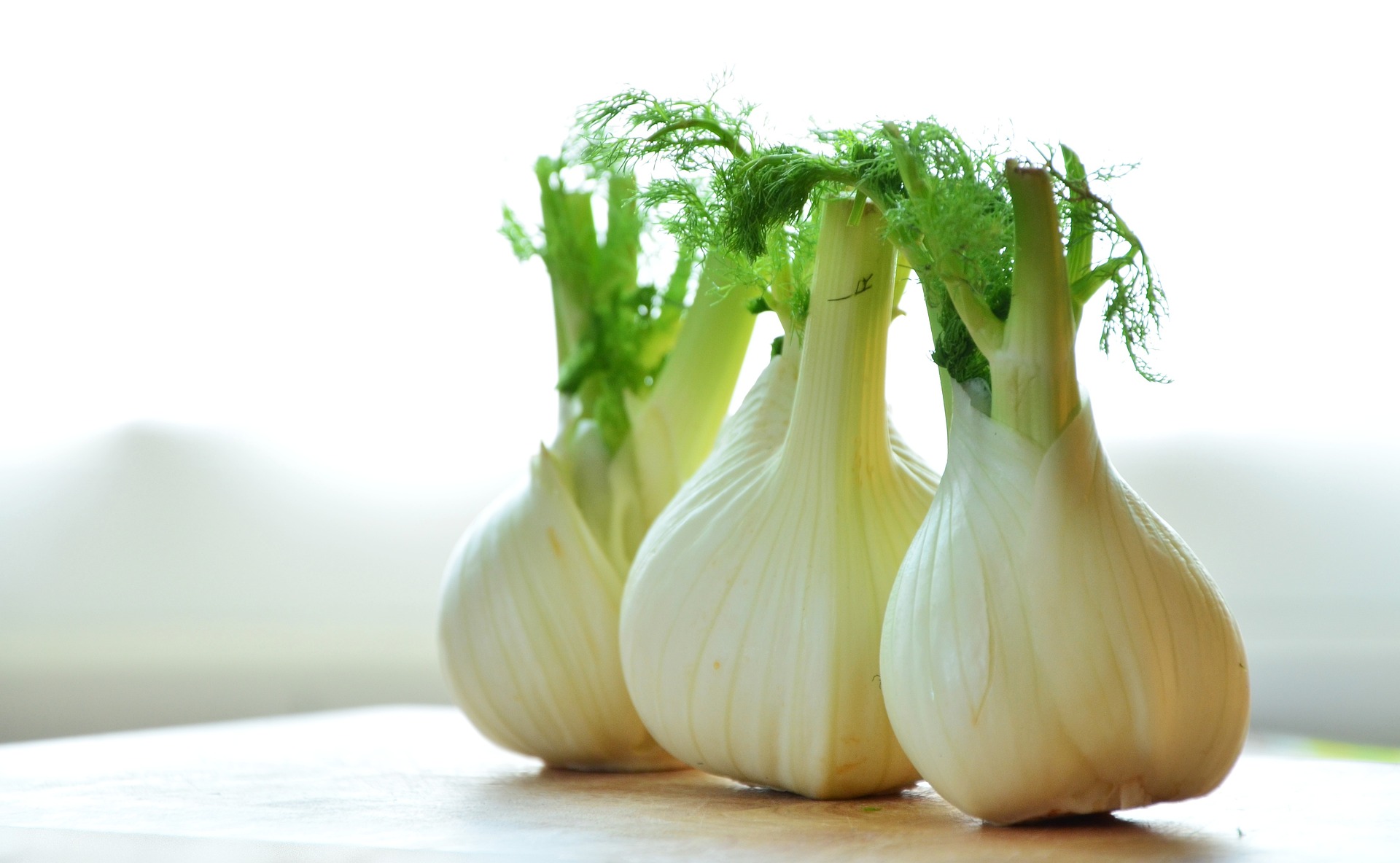If you want to preserve your fennel for later, you should know the steps to follow to keep it fresh and ready for your next meal. Fennel can be frozen, dried, and even roasted. This article will show you how to store fennel and how to cook it, as well.

What is Fennel?
A flowering plant known as fennel has feathery, deep green leaves and a white, fibrous bulb. The structure is smaller and thicker than a cabbage, yet it has tightly overlapping pieces. All parts of the plant are edible, and just cleaning and slicing are required for preparation, with the bulb receiving the most of the focus.
Both whole and crushed, the seeds or fruit are dried and used as a common spice. The taste is mildly sweet and vegetal licorice-like, and the vegetables and grains are reasonably priced. Even though the two plants are combined to manufacture the alcoholic beverage absinthe, it is occasionally mistakenly labeled as anise, a completely different plant.
Reference: Fennel in the Garden
Fennel seed is frequently used as a flavoring in sausage, and it lends a fragrant licorice flavor to Mediterranean and Italian cuisine.
Plants of common fennel (Foeniculum vulgare), which resemble dill, are farmed for their seeds. The cool season annual Florence fennel (Foeniculum vulgare var. azoricum) is grown for its bulbous base and soft, anise-flavored stalks.
Florence fennel has fine-leafed fronds and robust stalks that can be eaten raw or cooked. Fennel pollen and seeds are also used in cooking. Sometimes fennel from Florence is branded as anise. The Mediterranean region is the natural habitat of both common and Florence fennel.
How to Store Fennel?
To extend the shelf life of fresh fennel, separate the edible portions (bulbs, stalks, fronds, and seeds) and store them separately. Here is a summary of how to keep fennel seeds, stalks, fronds, and bulbs.
- Place bulbs in the fridge. Store them in the refrigerator Fennel stalks should be cut from the bulb and placed in a plastic bag or another airtight container for storage. Store them in the refrigerator to retain fresh fennel bulbs for seven to ten days.
- Keep fronds and stalks in the water. Cut fennel stalks can be kept in the fridge or kitchen counter for a few days in a jar of water. Alternatively, you can keep them in a plastic bag or other airtight containers for seven to ten days.
- Seeds should be kept in the pantry. Fennel seeds should be stored in a glass jar in your pantry or cabinet. Add them to give stews, Italian sausages, or baked products an anise flavor. The seeds are usable for up to four years.
How do you Store Fennel Stalk & Fronds Separately from the Bulb?
If you were fortunate enough to get fennel with the stalks and fronds still attached, do so when you reach home. They look gorgeous standing up in a jar of water on the counter! Alternatively, you could wrap them and store them in the fridge for up to a week.
Additionally, you can separate the leaves from the stalks and preserve them individually. Before chilling, loosely wrap the stalks, and store the fronds in an open plastic bag with a damp paper towel, just like you would herbs.
How to Buy Fresh Fennel?
Fennel is available at grocery shops and farmers’ markets in the late winter when it is in season. When purchasing fresh fennel, keep an eye out for these qualities:
- Try to find white bulbs. Fennel bulbs should be large and white, without any stains or discoloration. Any color change indicates the fennel has begun to turn.
- Beware of wilting fronds. Long, green fennel stalks with vivid green feathery fronds are characteristics of healthy fennel bulbs. The fennel is not at its freshest when the fronds are wilted. Managers occasionally cut the stalks and leaves when they start to fade. Avoid purchasing fennel that has been pre-trimmed since grocery store produces.
- Analyze the smell. Fresh fennel will smell somewhat like licorice or anise. Make sure the plant has the proper scent before buying fennel bulbs.
How to Freeze Fennel?
When properly stored, fennel will remain fresh in your freezer for up to six months. Use these straightforward steps to freeze your fennel bulbs and stalks.
- The fronds are cut and frozen. Cut the stalks of the fennel fronds into one-inch sections after trimming the bulb. Place the sliced stalks in an ice cube tray, add water or oil to each well, and then freeze the tray. To use the fronds as a garnish, defrost them.
- Make the bulbs white. Slice the fresh fennel bulb into quarters after removing the bulb’s base with a sharp knife. Peel off the outer skin of the fennel and discard it if it has any dark spots. To blanch the sliced fennel, place the pieces in a pot of boiling water for one minute. After removing the quarters from the water, please place them in a dish of ice water to chill.
- Place in the freezer after wrapping. The fennel bulb pieces should be frozen after being wrapped in plastic or a freezer bag. For up to six months, fennel can be frozen.
How to Cook with Fennel?
Trim any browning from the bottom of a fennel bulb and take off the stems and fronds. Use a knife to remove any broken components. It is best to slice fennel extremely thinly if you are serving it raw; a mandoline is useful.
Slice the bulb with a mandoline or extremely sharp chef’s knife while holding it on its root end. The fennel fronds can be added as a garnish or tossed into a salad or slaw. Bulb slices can also be pickled and consumed as a snack.
Before roasting, grilling, or braising the fennel bulb, you can slice, chop, or cut it into quarters. The stems can be used whole underneath roasted chicken or other meat to prevent browning and add flavor or thinly sliced and used in dishes like celery.
What does Fennel Taste Like?
A delicate anise flavor can be found in fennel. When consumed raw, it has a licorice-like, vegetal flavor that is cooling and not overbearing. It is well-liked in basic dishes and antipasti because of its crispiness and fresh taste. The bulb loses its sharpness and becomes slightly sweeter after being cooked, mellowing even more. The seeds add a pleasant spice to sweet and savory foods because they have a richer anise flavor without the freshness.
How to Dehydrate Fennel Leaves?
Fennel leaves can be dried using an oven or a food dehydrator; in this case, it would only take around 6 hours to dry. To dehydrate the fennel leaves, follow the steps described in the previous point (for 2 or 3 hours).
However, you may also hang the bunches of cut fennel leaves, which you should remove from the stem, in a location that is still well-ventilated but shielded from direct sunlight.
After two to four weeks of maturing at room temperature, fennel leaves should become brittle. But it’s simple to shred them inside a bag before putting them in an airtight container (glass or plastic).
In a dry, cold, dark spot, dried fennel leaves can also be stored at room temperature for a year. Additionally, you can freeze the dried fennel leaves for 18 to 24 months.
How to Preserve Fennel Seeds?
Fennel seeds are typically sold sealed in bags or plastic containers. You may keep them that way until the manufacturer’s suggested expiration date by keeping them in dark, cold, and dry locations.
You must transfer the fennel seeds to an airtight container, preferably one made of glass, and keep them there for two to four years at room temperature (in a location free of moisture, dark, and cool).
However, to preserve the fennel seed, you must take the following steps:
- Take the inflorescences out.
Using a sharp knife, carefully remove the inflorescences from the fennel stalk. - Put the inflorescences in a bag.
The inflorescences you removed from the fennel stalk should be placed in a paper bag and vigorously shaken for a few minutes. The seeds will emerge from the inflorescences in this manner. - Take out the seeds.
To remove the fennel seeds, place everything into the bag on a plate or tray. - Dry the seeds.
The seeds can be spread out on a drying mesh and dried for two to four days at room temperature in a dark, well-ventilated area.
Alternately, spread the fennel seeds out on a baking sheet lined with parchment paper and bake for 7 or 10 minutes at the lowest temperature possible. - Transfer to a glass jar.
Put the seeds in an airtight container when dried (if it is much better glass). Wait for them to cool completely before storing them if you have baked them. - Note the date of storage.
Please write the fennel seeds’ expiration date on a label that may be attached to the jar. - I am keeping the seeds at normal temperature.
Place the jar in your pantry in a cool, dry, dark spot. Fennel seeds can be stored in this manner for a year to two years at room temperature.
How to Know if Fennel has gone Bad?
If fennel possesses any of these traits, it has been spoiled:
- Rotten components.
- Mold (black or white patches or lint) (black or white spots or lint).
- It has a bad odor.
- Unique flavor.
- When referring to fresh fennel, viscosity and very soft patches are present.
Why does Fennel Spoil?
Fennel is a plant that contains a lot of water, giving it the ideal habitat for any type of microorganism, including bacteria and fungi.
Therefore, if fennel is not kept in an appropriate atmosphere, it will rot quickly and attract various insects and animals due to its odor.
How do you, Defrost Fennel?
Fennel’s texture and form may have somewhat changed after it is defrosted. Therefore we don’t recommend using it raw in salads or other dishes.
The flavor and aroma, however, won’t change. The following measures should be followed to thaw the fennel portions properly:
The fennel bulb can be removed from the freezer and thawed overnight in the refrigerator before use. Once finished, you can use them just like a fresh fennel bulb.
Fennel leaf cubes that are frozen can be added right into the dish you’re preparing. The leaves will release their aroma and flavor into your plate as the ice melts.
Conclusion
Fennel is a versatile vegetable with several uses but needs to be prepared and stored carefully; your fridge is your best bet! Fennel can be kept either whole or in its parts—the bulb stalks and leaves—in the refrigerator. All portions may also be frozen; however, remember that freezing demands more preparation.
Now that you know how to preserve fennel, it is time to organize your meals. Fennel may be used in two dishes: Farfalle with Tuna, Lemon, and Fennel, a summery pasta meal, and Salmon with Fennel & Sun-Dried Tomato Couscous, a delectable feast that only calls for one skillet.
